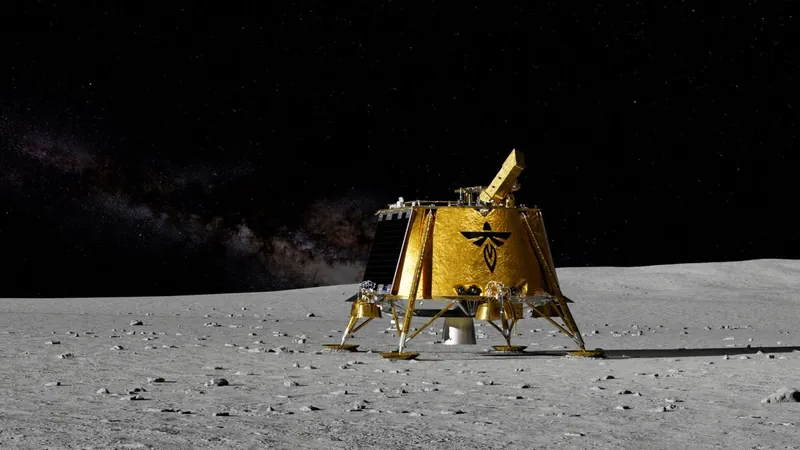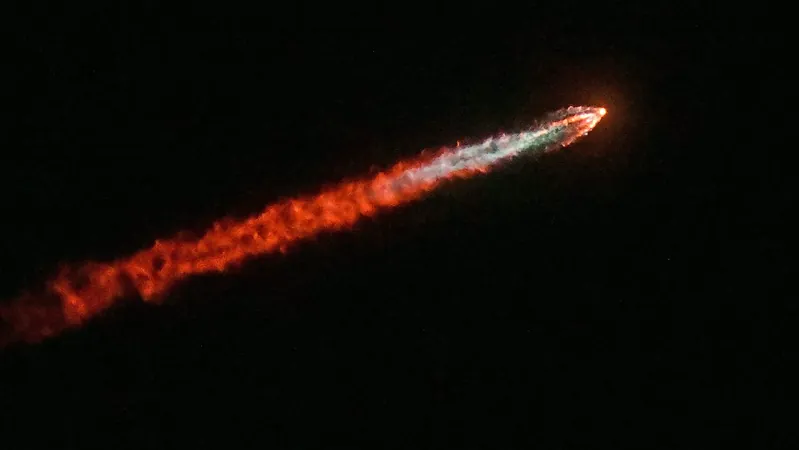
NASA's Groundbreaking Blue Ghost Moon Lander Set to Reveal Earth's Magnetic Field Dynamics
2025-01-14
Author: Arjun
NASA's Groundbreaking Blue Ghost Moon Lander Set to Reveal Earth's Magnetic Field Dynamics
Get ready for an incredible leap in our understanding of Earth's magnetic field! Firefly Aerospace's highly anticipated Blue Ghost moon lander is on the verge of launching, with a mission that promises to change how we perceive our planet's relationship with space weather.
Launch Details
Scheduled to take off at 1:11 a.m. EST on January 15, 2024, from NASA's Kennedy Space Center in Florida aboard a SpaceX Falcon 9 rocket, Blue Ghost is carrying an impressive payload of advanced scientific equipment.
The LEXI Instrument
Among its ten NASA payloads is the Lunar Environment Heliospheric X-ray Imager (LEXI), an innovative instrument designed specifically to monitor the solar wind's interaction with Earth's magnetosphere.
What makes LEXI particularly special is its cutting-edge technology, featuring nine lobster-eye micropore optical elements. This X-ray imager will track low-energy X-rays produced when solar wind collides with Earth's magnetic field, especially at the magnetopause, the frontier where the magnetosphere meets the solar wind.
By observing these interactions from the Moon’s unique vantage point, LEXI will provide unprecedented insights into how the magnetosphere expands and contracts in response to varying solar wind pressures.
Experts Weigh In
"We expect to witness the magnetosphere's rhythmic activity, almost like it's breathing in and out," declared Hyunju Connor, an astrophysicist at NASA's Goddard Space Flight Center. This expansion and contraction, influenced by shifts in solar wind intensity, plays a crucial role in the protection it offers us from energetic particles that can disrupt satellite operations and even affect power grids on Earth.
Significance of the Mission
Deepening our understanding of this phenomenon could drastically improve our infrastructure’s resilience against space weather. It’s not just about scientific curiosity; this knowledge can have practical implications for protecting our technological systems.
History of LEXI
Interestingly, this isn’t LEXI’s first foray into space. The instrument was initially developed as STORM, a technology demonstration that flew aboard a sounding rocket in 2012. Its refurbishing as LEXI for the Blue Ghost mission exemplifies NASA's commitment to cost-effective innovations through the Commercial Lunar Payload Services (CLPS) program, which engages various companies in lunar exploration.
Journey to the Moon
The journey to the Moon for Blue Ghost won’t be direct; the spacecraft will orbit Earth for 25 days to gain altitude before burning its engines to head toward its lunar destination. After an additional 16 days of orbit adjustment, it will prepare for landing, setting the stage for LEXI's game-changing mission to begin once it touches down.
Looking Forward
As we count down to this remarkable event, brace yourselves for discoveries that could redefine our understanding of the space weather that surrounds us and the protective bubble created by our magnetic field. Keep your eyes on the skies—this is one lunar mission you won’t want to miss!


 Brasil (PT)
Brasil (PT)
 Canada (EN)
Canada (EN)
 Chile (ES)
Chile (ES)
 Česko (CS)
Česko (CS)
 대한민국 (KO)
대한민국 (KO)
 España (ES)
España (ES)
 France (FR)
France (FR)
 Hong Kong (EN)
Hong Kong (EN)
 Italia (IT)
Italia (IT)
 日本 (JA)
日本 (JA)
 Magyarország (HU)
Magyarország (HU)
 Norge (NO)
Norge (NO)
 Polska (PL)
Polska (PL)
 Schweiz (DE)
Schweiz (DE)
 Singapore (EN)
Singapore (EN)
 Sverige (SV)
Sverige (SV)
 Suomi (FI)
Suomi (FI)
 Türkiye (TR)
Türkiye (TR)
 الإمارات العربية المتحدة (AR)
الإمارات العربية المتحدة (AR)